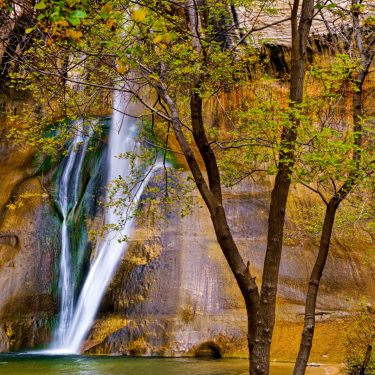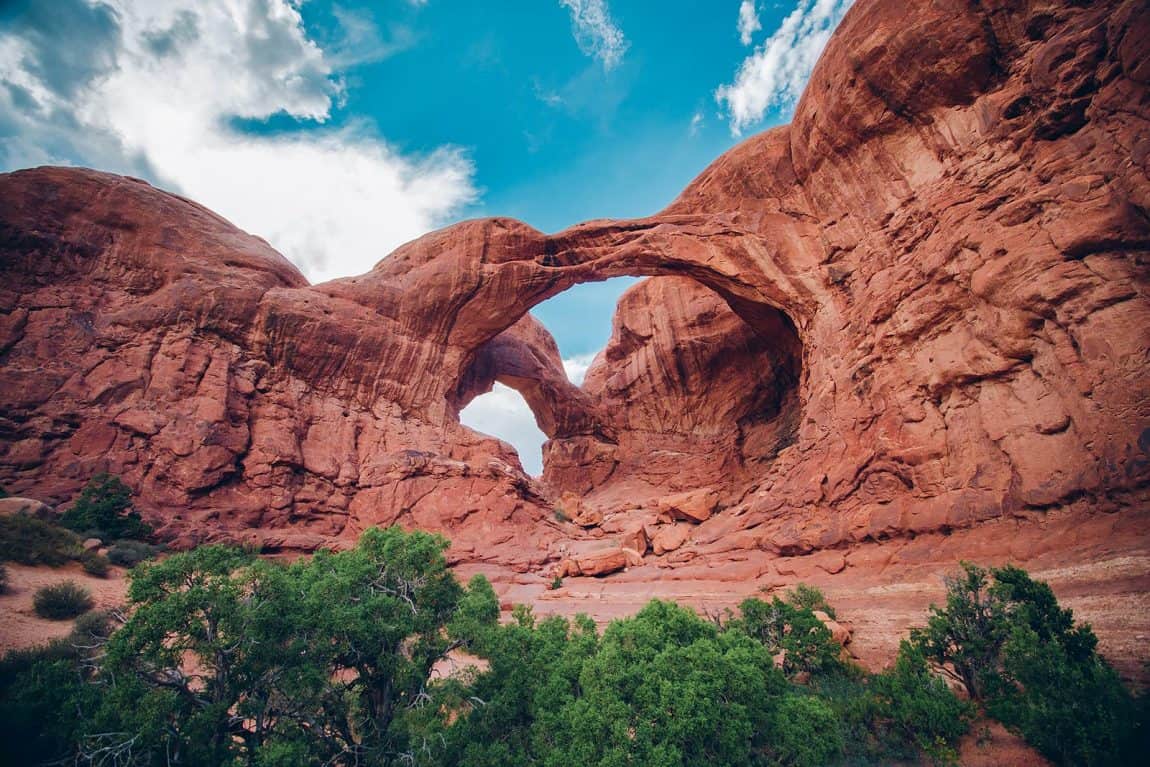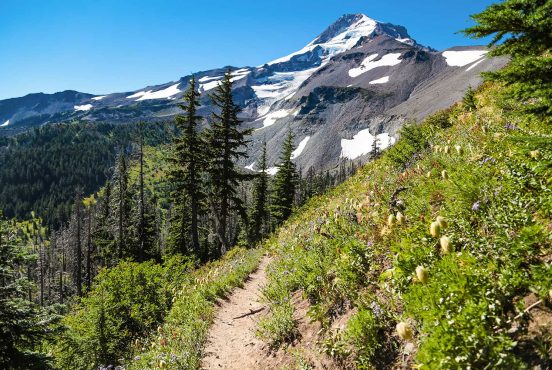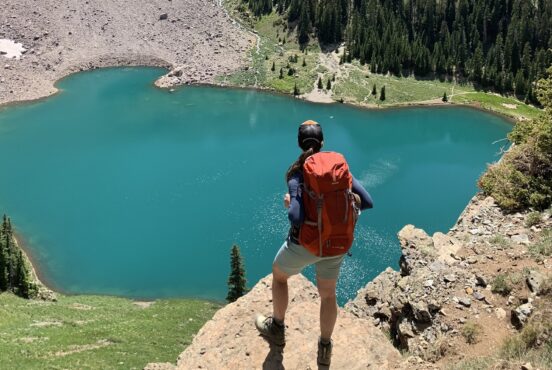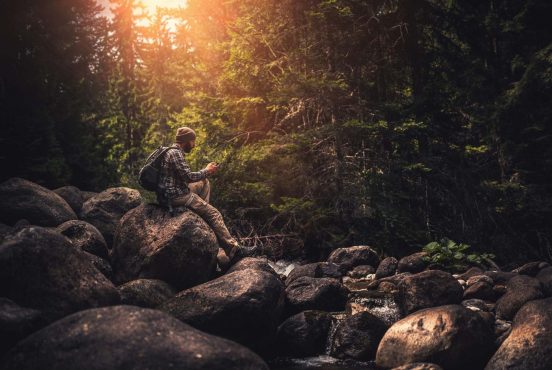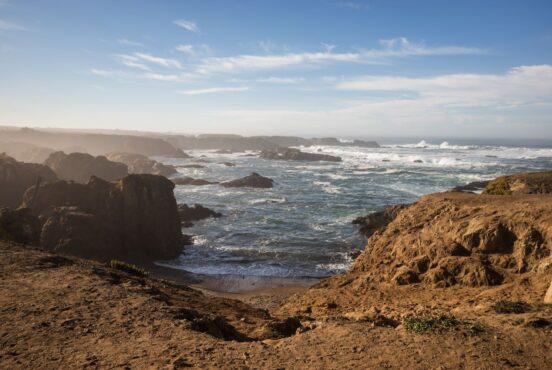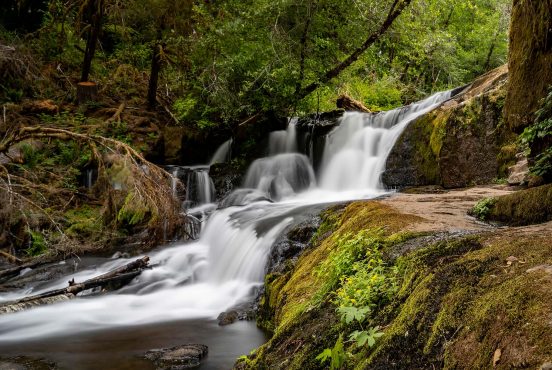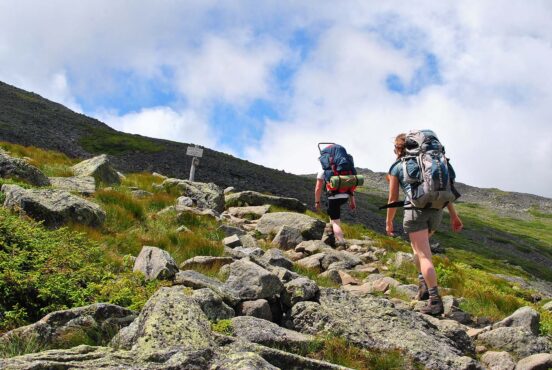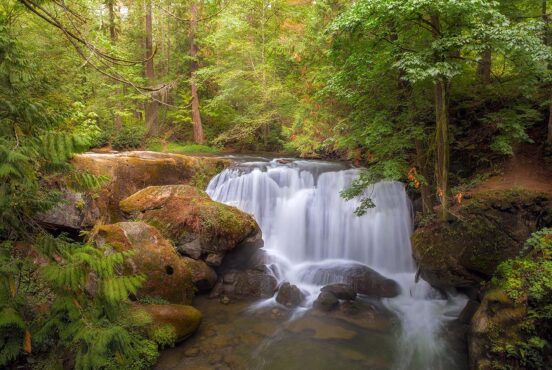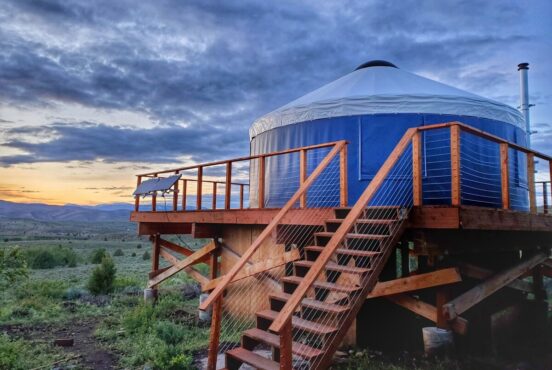Welcome to Moab, gateway to the epic red rock landscapes of Arches, Canyonlands, and Dead Horse Point.
I was 15 years old when I took my first trip to Moab. It was a special summer trip for all of the Eagle Scouts in our troop, a weekend rafting trip where we crushed the rapids by day and cooked s’mores by the campfire at night.
To be fair, these were pretty much the bunny slopes of rapids, so most of our days on the water were spent simply floating along the river, enjoying good company (and the occasional waterfight) as we drifted through the epic canyons of Moab.
15 years later, I can still remember the overwhelming sense of awe that I felt in the presence of such spectacular natural scenery. It takes something special to leave a group of teenage boys speechless, and the red rock landscape of Moab repeatedly took our breath away.
Of course, that shouldn’t come as a surprise to anyone who’s ever been to Moab.
Commonly referred to as the “Gateway to Adventure,” Moab sits at the epicenter of red rock paradise. The city is within driving distance of Arches National Park, Canyonlands National Park, Dead Horse Point State Park, the La Sal Mountains, and the epic White Wash Sand Dunes. Gateway to adventure, indeed.
There’s plenty of adventurous activities to pursue in Moab, but nothing beats the simplicity of exploring the area’s natural splendor on foot. There are plenty of challenging trails for experienced hikers, but most of the best hikes are relatively easy and accessible, making it a great hiking destination for beginners and families with small children.
Best Hikes Near Moab – Our Top Picks!
Our list of the best hikes near Moab offers a sampling of the best trails in all three major Parks. Some of them barely qualify as a hike, delivering a breathtaking viewpoint a half-mile or less from the parking lot, while others will definitely make you work for it.
So, whether you’re looking to hit the Moab highlight reel with as many short hikes as you can squeeze into a weekend, or planning to taking your time on some of the longer trails that deliver delayed gratification, we’ve got you covered with 15 hikes featuring the best sights and experiences in Moab.
Related Read: 6 Epic Glamping Destinations Near Moab, Utah
1. Delicate Arch
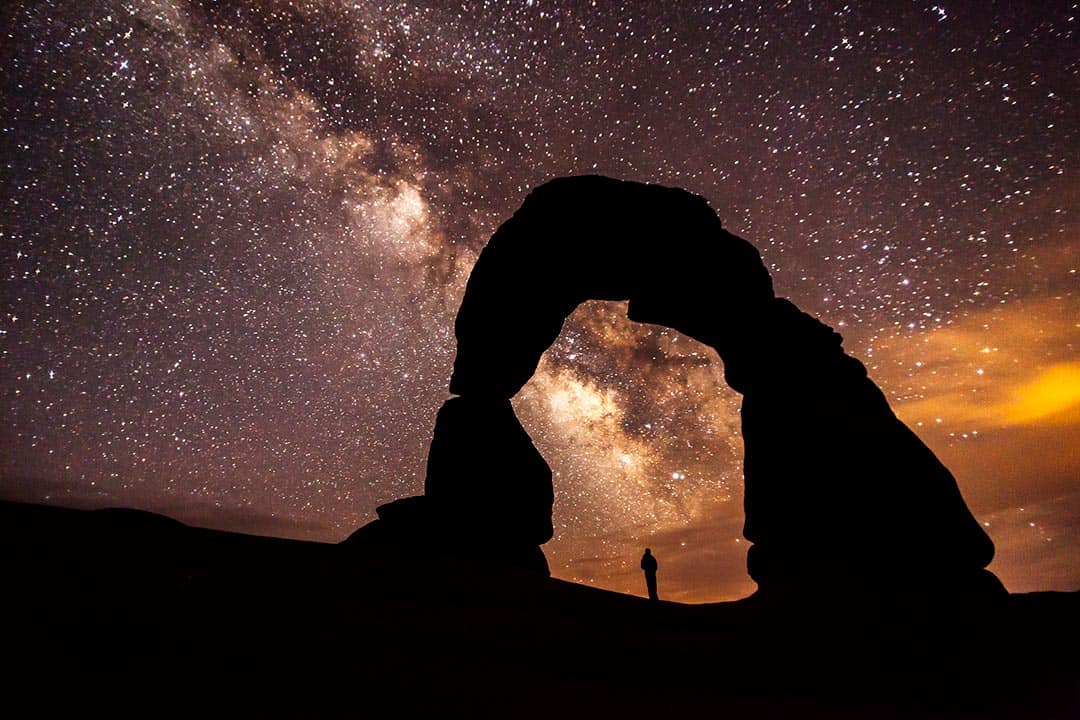
Why you should go: Get a first-hand view of the tallest freestanding natural arch in Arches National Park.
- Distance: 3.1 miles
- Elevation Gain: 567 feet
- Difficulty: Moderate
Out of the 2,000+ natural arches in Arches National Park, Delicate Arch is easily the biggest attraction. It’s the tallest freestanding arch in the Park, widely recognized as the state symbol for Utah, and one of the most famous geologic features in the world. You’ve probably seen the iconic arch in pictures, but trust us — it’s even better in person.
The primary trail to delicate arch takes you past Old Wolfe Ranch, Ute Indian petroglyphs, and a smaller natural arch on the way to the main attraction. The trail is moderately challenging with a narrow 200-foot section near the end that’ll scare the shit out of folks with a fear of heights, so you might want to leave the little ones at home for this excursion.
Of course, you don’t have to trek to the base of the natural arch to appreciate the magnificent scenery. There’s a great viewpoint near the trailhead, and another scenic vista at the end of the half-mile Upper Delicate Arch Viewpoint Trail.
More Information: Delicate Arch Trail
2. Devil’s Garden
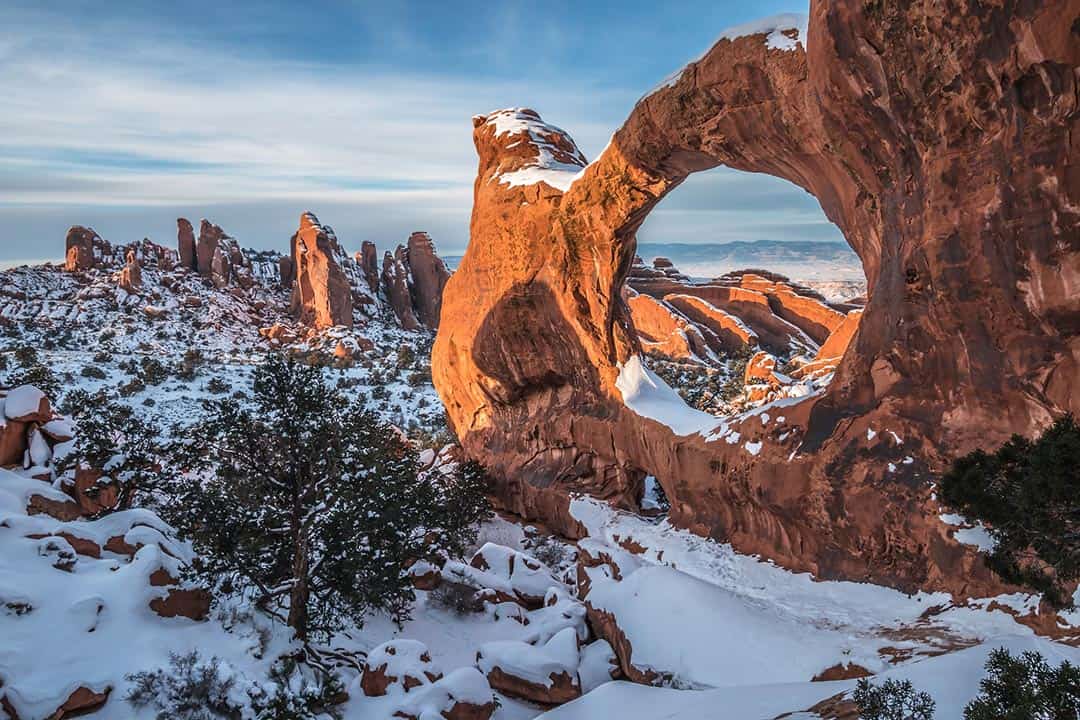
Why you should go: A truly epic hike featuring eight named arches, a tower, and magnificent views.
- Distance: 5 miles
- Elevation Gain: 548 feet
- Difficulty: Challenging
The Devil’s Garden Trail is the second most-popular hike in Arches National Park. Its remote location, moderately challenging difficulty, and availability of countless side-paths usually translate to fewer crowds and, if you time your trip right, relative seclusion.
Your tour through the Devil’s Garden includes no fewer than eight named natural arches, rock spires, and a large concentration of narrow rock walls called “fins.” Landscape Arch is the crown jewel of the hike, which ranks as the longest rock span in North America at 306 feet.
More Information: Devil’s Garden Full Lollipop Loop
3. Corona Arch
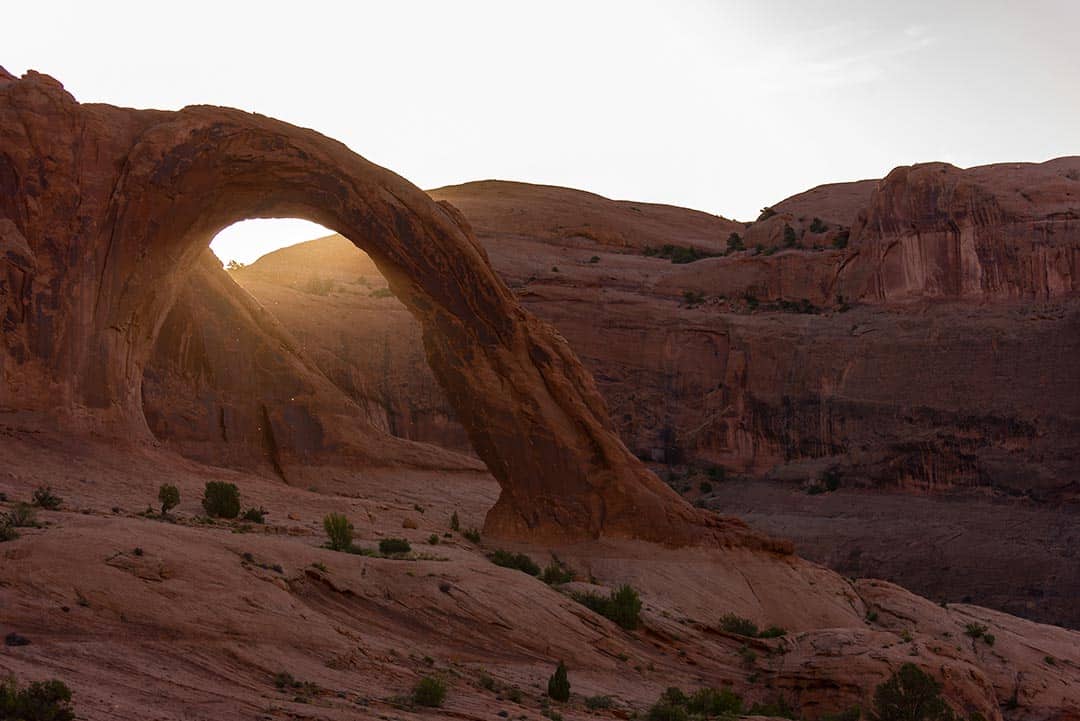
Why you should go: A quick two-hour tour of three natural arches outside of Arches National Park.
- Distance: 2.2
- Elevation Gain: 367 feet
- Difficulty: Moderate
The Corona Arch Trail features a trio of impressive natural arches: Pinto Arch, Bowtie Arch, and Corona Arch, also known as Little Rainbow Bridge. The trail also affords views of the Colorado River and a large slickrock canyon.
The Corona Arch Trail is easy to follow and quick enough to knock out in less than two hours, though there are a few slickrock sections that can be challenging for hikers with unsure footing or a fear of heights.
There’s metal cables to use as handrails and a ladder to help you over a particularly steep step, but if it’s more of a challenge than you’re wanting to take on, you can stop at the viewpoint after the first set of cables and still see all three arches.
More Information: Corona Arch Trail
Additional Read: 6 Outdoorsy Weekend Road Trips from Salt Lake City, Utah
4. Mesa Arch
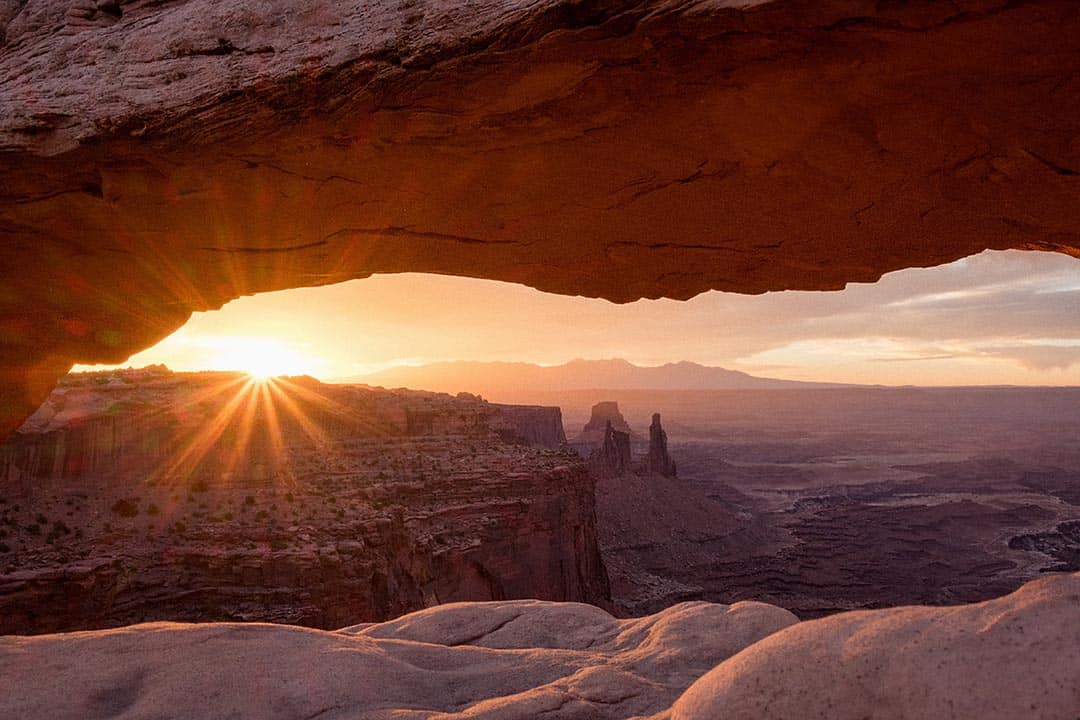
Why you should go: An easy hike to an iconic natural arch.
- Distance: 0.7 miles
- Elevation Gain: 61 feet
- Difficulty: Easy
Chances are you’ve probably seen the picturesque Mesa Arch on a desktop background, postcard, or travel blogger’s Instagram page. It’s hard to say what’s more beautiful about this picture-perfect destination — the beautiful natural arch, or the epic landscape in the background.
Given the short distance to Mesa Arch and the location’s popularity, the parking lot tends to fill up quickly during the day. It’s best to visit early in the morning or late in the day to skip the crowds.
More Information: Mesa Arch Trail
5. Grandstaff Canyon
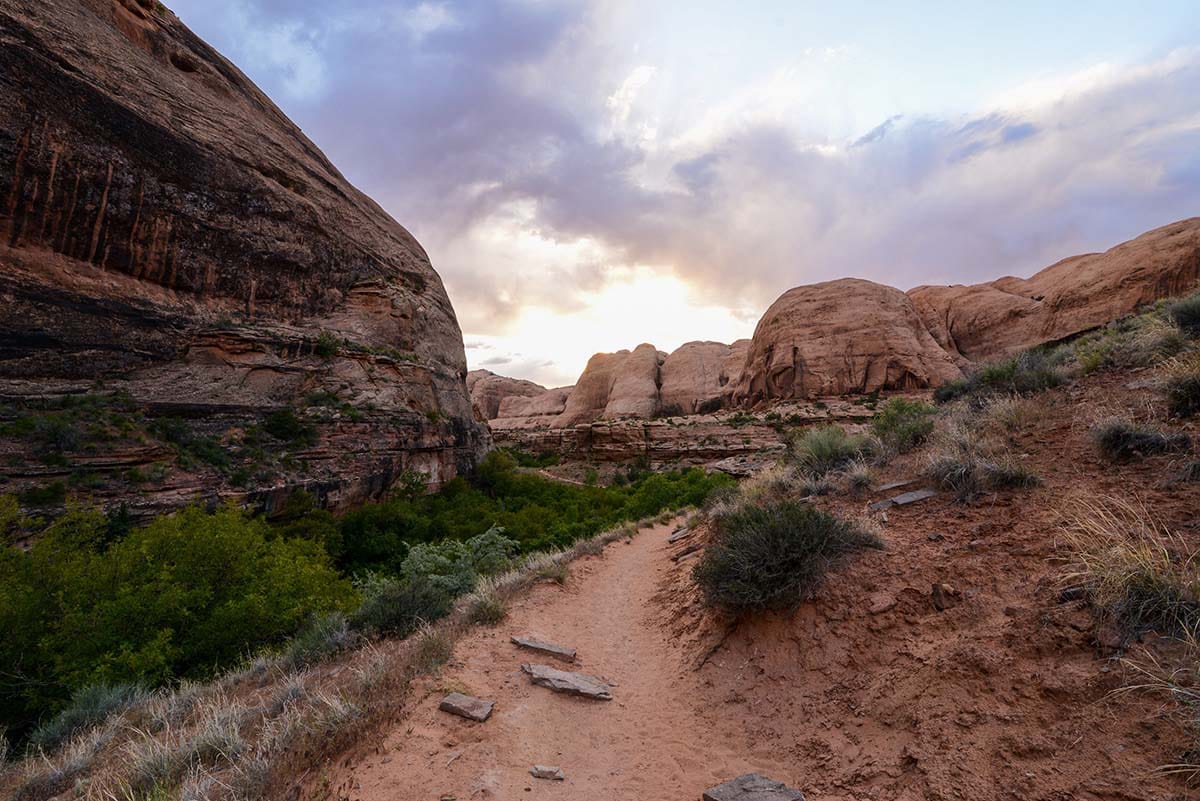
Why you should go: Trek through Grandstaff Canyon to Morning Glory Natural Bridge, the sixth longest natural rock span in the United States.
- Distance: 4.1 miles
- Elevation Gain: 314 feet
- Difficulty: Moderate
Named after William Grandstaff, an African American prospector who grazed livestock in the area during the 19th century, Grandstaff Canyon is home to Cottonwoods, singing frogs, sandstone amphitheaters, and of course, natural arches.
The star of the show, Morning Glory Natural Bridge, holds the record for the sixth longest natural rock span in the country, stretching an impressive 243 feet across the epic amphitheater.
Walking through Morning Glory Natural Bridge is an awe-inspiring experience, but for the best views in the house, bring your climbing gear and rappel down from the top.
More Information: Grandstaff Trail
6. Double Arch
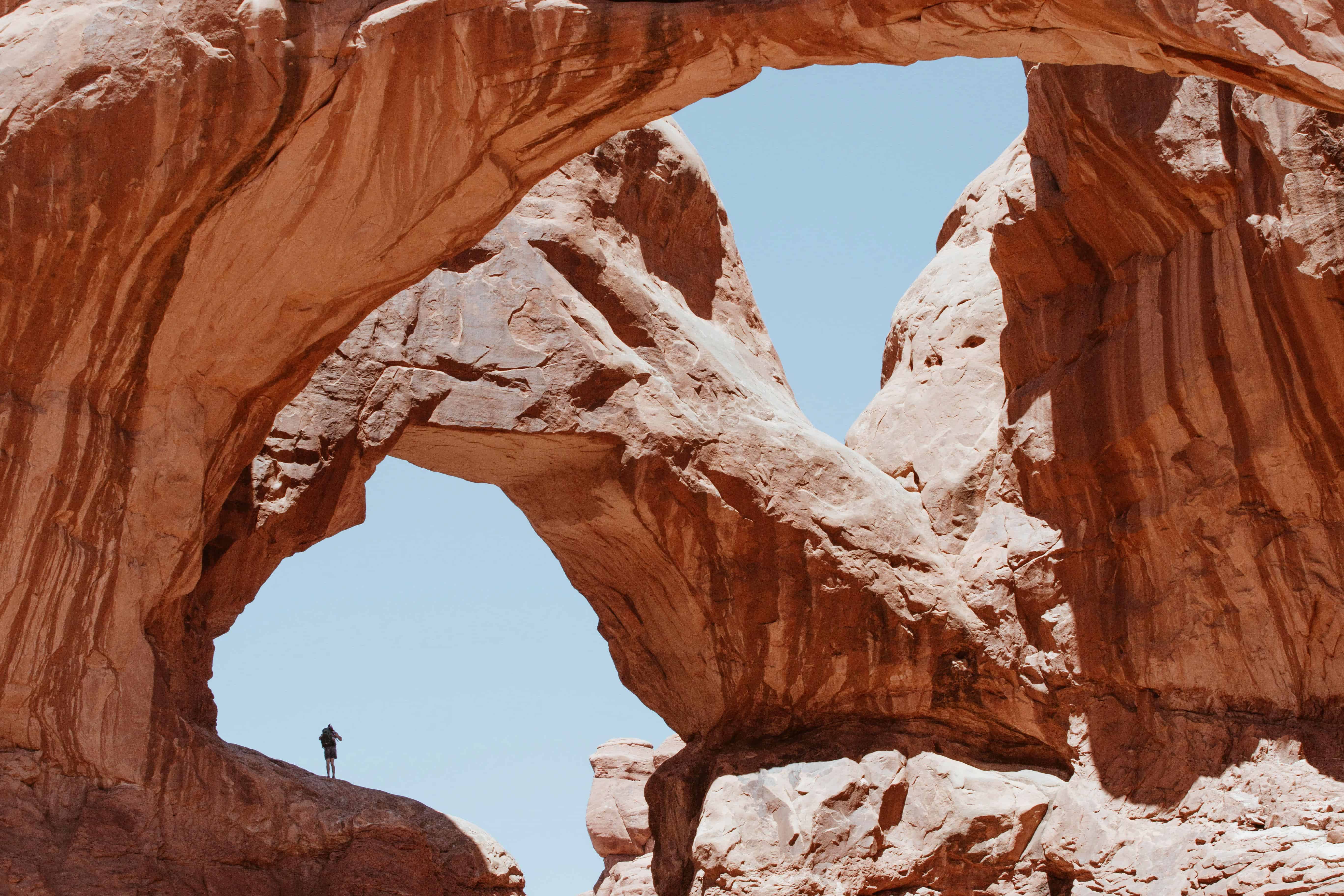
Why you should go: A family-friendly jaunt to a set of stunning natural arches that are joined at the hip.
- Distance: 0.5 miles
- Elevation Gain: 31 feet
- Difficulty: Easy
The Double Arch Trail is almost too short to call a hike, but it’s absolutely worth the journey for the spectacular scenery. You won’t get much of an exercise here, but you’ll probably exhaust your camera battery while capturing the remarkable landscape.
Double Arch features two natural arches known as “the Spectacles” that share the same stone foundation. Standing 112 feet-tall, the larger arch is actually the tallest in Arches National Park (not to be confused with Delicate Arch, the tallest freestanding arch in the Park).
On your way back to the trailhead, keep an eye out for the Parade of Elephants — a massive rock formation that looks like a line of elephants holding each others’ tails.
More Information: Double Arch Trail
7. The Fiery Furnace
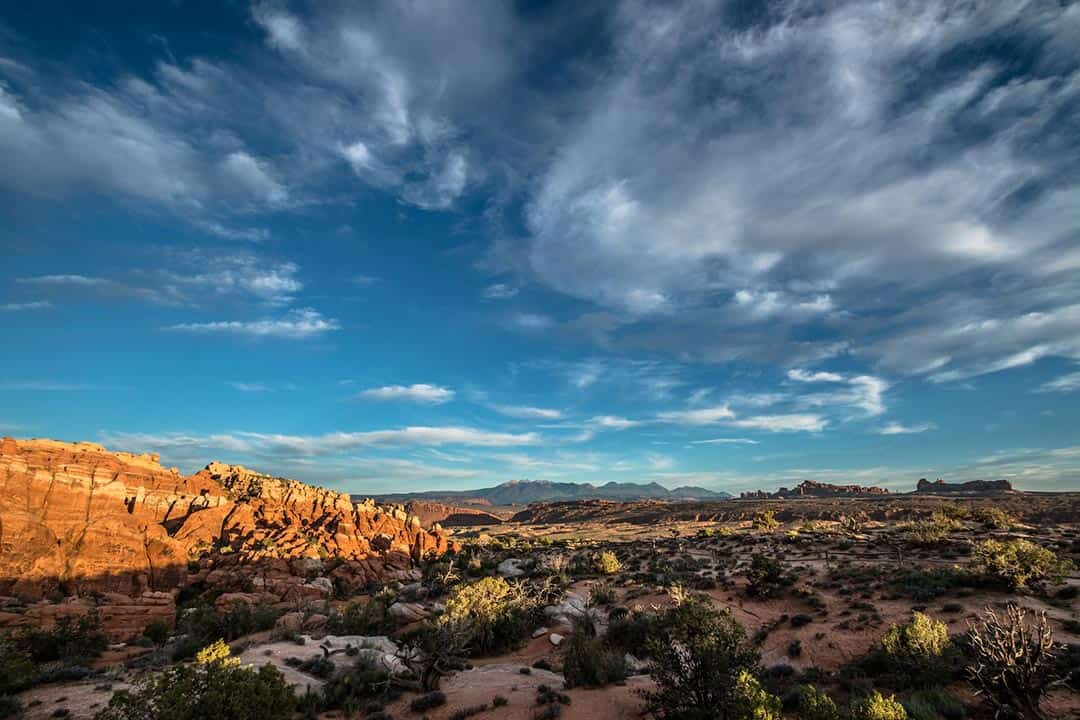
Why you should go: With a name like the Fiery Furnace, how can you resist tackling this infamous maze?
- Distance: 2.5 miles
- Elevation Gain: 620 feet
- Difficulty: Moderate
A continuation of the shattered fins of the Devil’s Garden, the Fiery Furnace is a maze of canyons, slot canyons, and gorges. There’s no established trail through the Fiery Furnace, and the twists and turns are known to disorient even the most experienced canyoneers.
Why would someone be crazy enough to risk getting marooned in a desert maze? For one, the adventure is packed with gorgeous rock formations, arches, overhangs, and secret passages. Second, and perhaps more importantly, you don’t have to tackle the maze alone. Book a two-hour tour with a Park Ranger, and you’ll enjoy a guided exploration of roughly 2.5 miles of the Fiery Furnace with a seasoned guide who knows their way.
While it’s highly recommended that you book a tour, those who prefer to explore the maze alone can obtain a day-use permit for $10.
More Information: Fiery Furnace Trail
8. Grand View Point
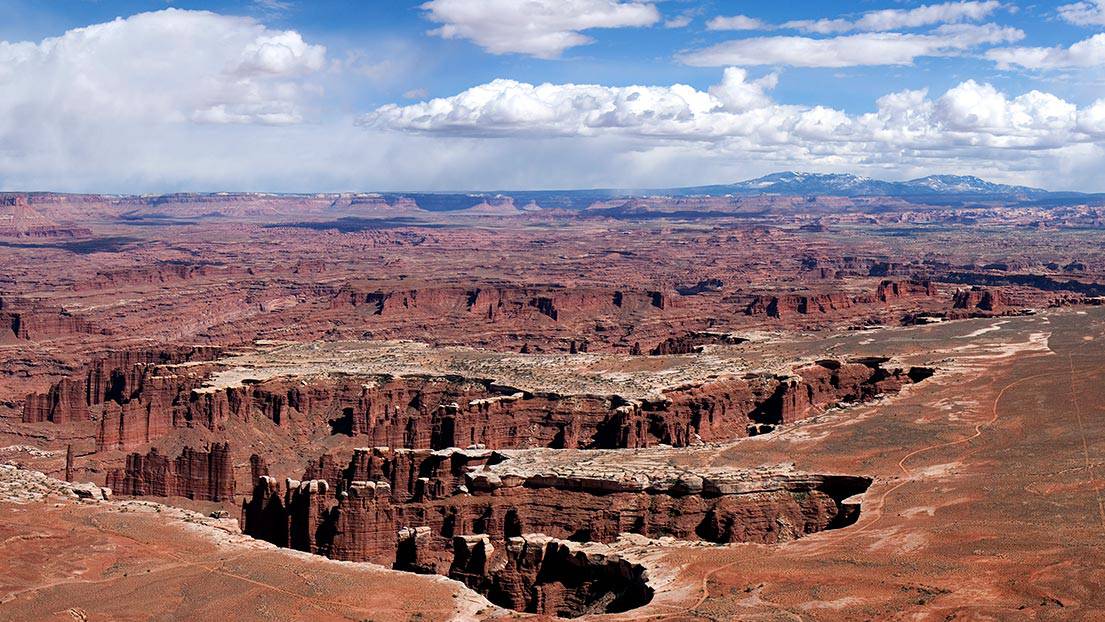
Why you should go: Enjoy spectacular sweeping views from the southern edge of the Island in the Sky.
- Distance: 1.8 miles
- Elevation Gain: 173 feet
- Difficulty: Easy
The Grand View Point Trail begins at the scenic overlook by the parking lot, an easily accessible viewpoint that stands on its own if you don’t have time to complete the full hike. At 6,080 feet in elevation, you’ll enjoy epic views of the canyons, basins, and distant mountains.
From the scenic overlook, you’ll hike a little under a mile along the southern ledge of the Island in the Sky to another epic viewpoint. Scramble up the small rock formations here and you’ll find 360-degree views of the entire area, including Monument Basin, Junction Butte, the Colorado River, and the distant Green River.
More Information: Grand View Point Trail
9. Windows Loop & Turret Arch

Why you should go: A must-see circuit at Arches National Park with three natural arches.
- Distance: 1.2 miles
- Elevation Gain: 170 feet
- Distance: Easy
The Windows Loop is another popular trail at Arches National Park, a family-friendly excursion that’s great for all ages and skill levels. You’ll see the North and South Window Arches — also known as “the Spectacles” because they look like eyeglasses with a nose-looking rock in the middle — as well as Turret Arch.
The Windows Loop is a heavily trafficked trail, so plan to visit early in the morning or late in the day to avoid the crowds.
More Information: Windows Loop and Turret Arch Trail
10. Landscape Arch
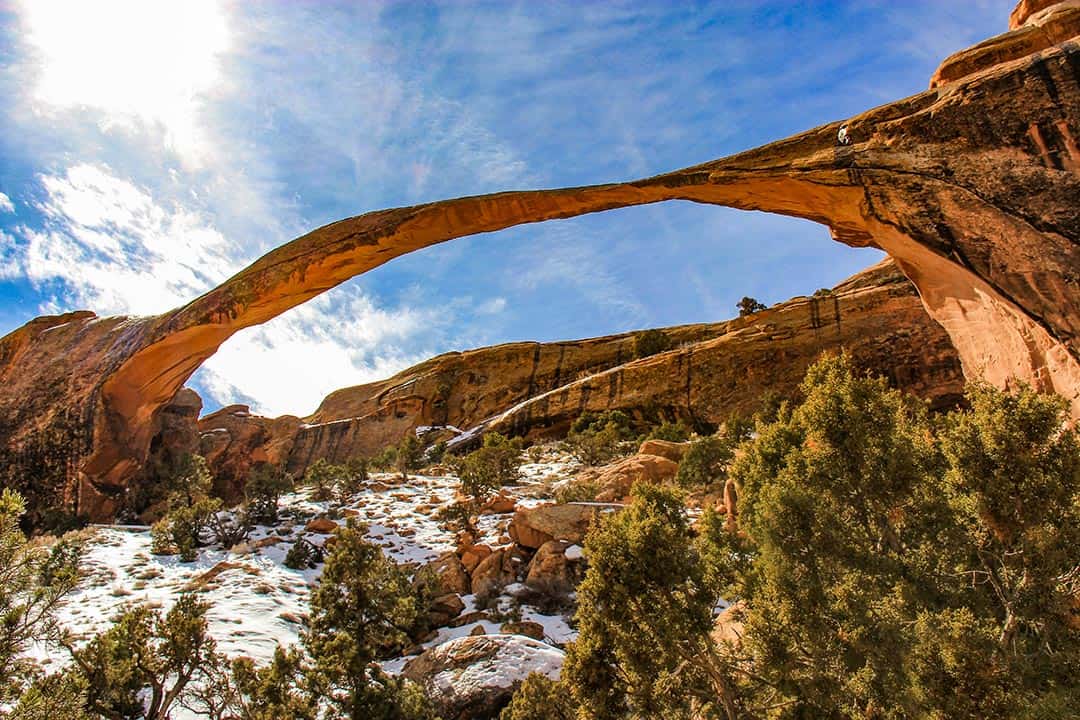
Why you should go: Visit the longest natural arch in North America, stretching 306 feet across the desert landscape.
- Distance: 1.9 miles
- Elevation Gain: 259 feet
- Difficulty: Easy
Landscape Arch has seen some deterioration in our lifetime, notably losing a 60-foot rock slab back in 1991, so it’s noticeably skinnier than many of the natural arches you’ll see at Arches National Park. The arch’s slim profile makes it remarkably unique, arguably looking more delicate than the Park’s famous Delicate Arch.
More Information: Landscape Arch Trail
11. Balanced Rock
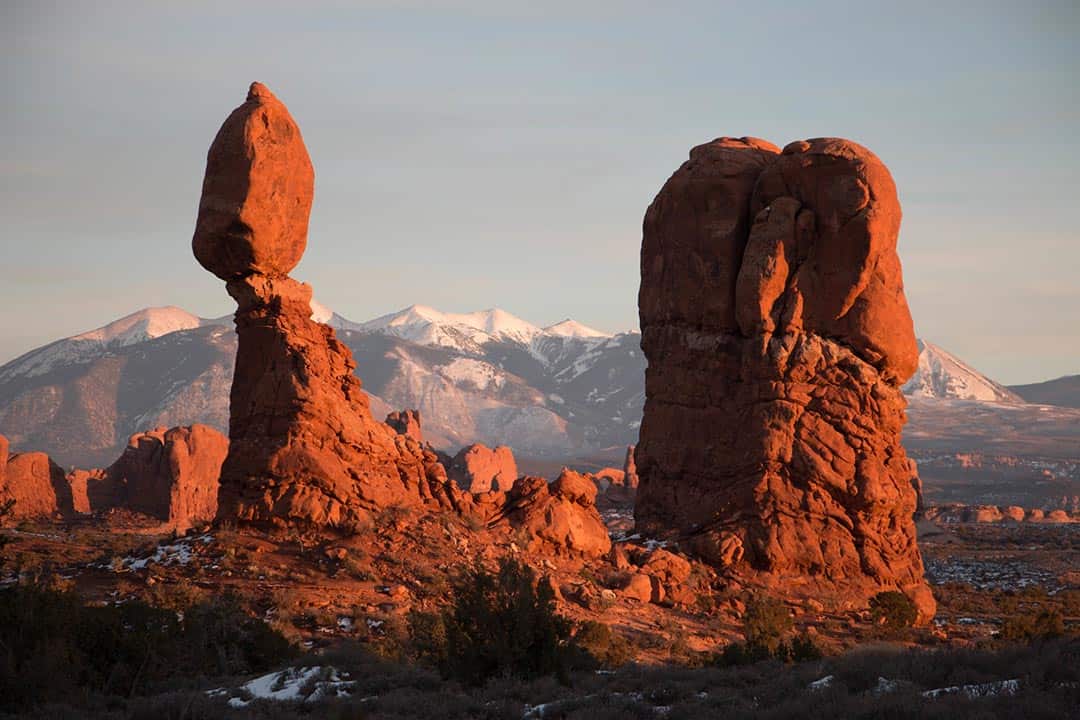
Why you should go: A quick-and-easy loop around a photogenic rock formation.
- Distance: 0.3 miles
- Elevation Gain: 45 feet
- Difficulty: Easy
One of the most iconic rock formations in Arches National Park, Balanced Rock rises 128 feet above the desert floor. Don’t worry, it may seem like the gravity-defying boulder on top is ready to topple over any moment, but you’re perfectly safe following the 0.3-mile loop around its base.
More Information: Balanced Rock Trail
12. Fisher Towers
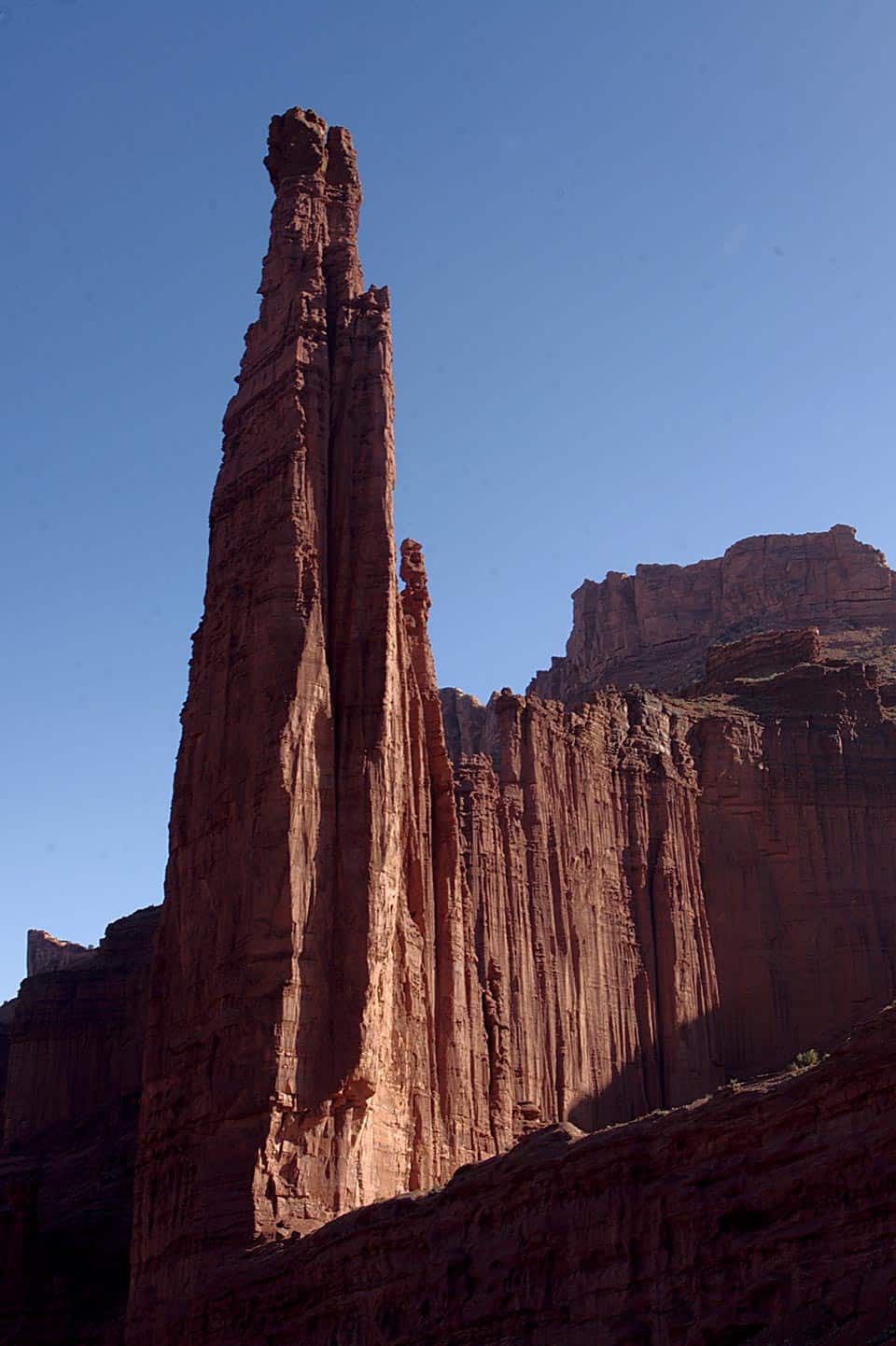
Why you should go: A gorgeous trail offering close-up views of Fisher Towers and the Onion Creek area, with distant views of the Fisher Mesa, Castle Valley, and Colorado River.
- Distance: 4.5 miles
- Elevation Gain: 1,812 feet
- Difficulty: Moderate
The Fisher Towers are a fascinating set of rock formations formed by centuries of erosion. The sandstone towers take on even more unique profiles as you walk around the base, though the best views in the house are reserved for those who bring their climbing gear.
The Fisher Towers Trail ends with a scenic viewpoint with an incredible vantage of the Fisher Mesa, Castle Valley, and Colorado River.
Fair warning, this trail doesn’t offer any shade and is known to be blazing hot during the day, so bring plenty of water and sunscreen.
More Information: Fisher Towers Trail
13. Park Avenue
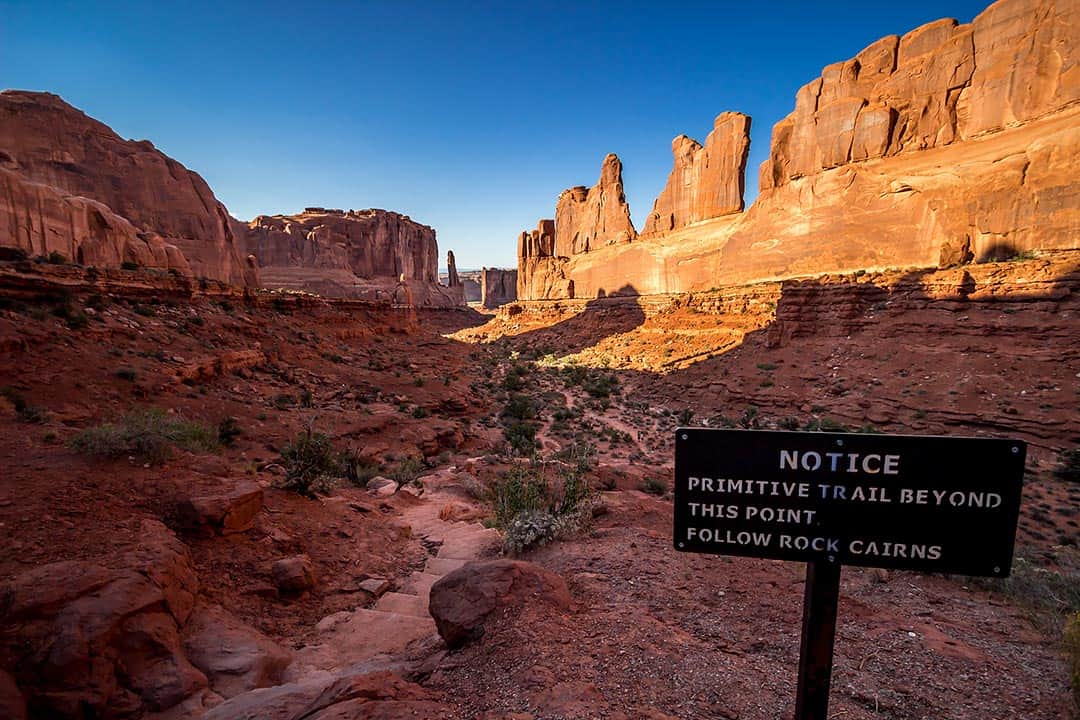
Why you should go: the Park Avenue Trail is like walking the streets of Manhattan with the skyscrapers towering over you — except here, the skyscrapers are epic natural monuments shaped by millennia of erosion
- Distance: 1.8 miles
- Elevation Gain: 298 feet
- Difficulty: Easy
The Park Avenue Trail is a heavily trafficked point-to-point trail that can be completed as a short one-way hike or a longer out-and-back excursion. Either way you go, most people seem to prefer starting at the southern trailhead.
One of the first major attractions visitors can reach in Arches National Park, the Park Avenue Trail delivers a highlight reel of some of the Park’s best-known monoliths. The named monuments you’ll pass on the trail include the Courthouse Towers, the Organ, the Tower of Babel, the Three Gossips, Queen Nefertiti, and Queen Victoria Rock.
More Information: Park Avenue Trail
14. Dead Horse Point
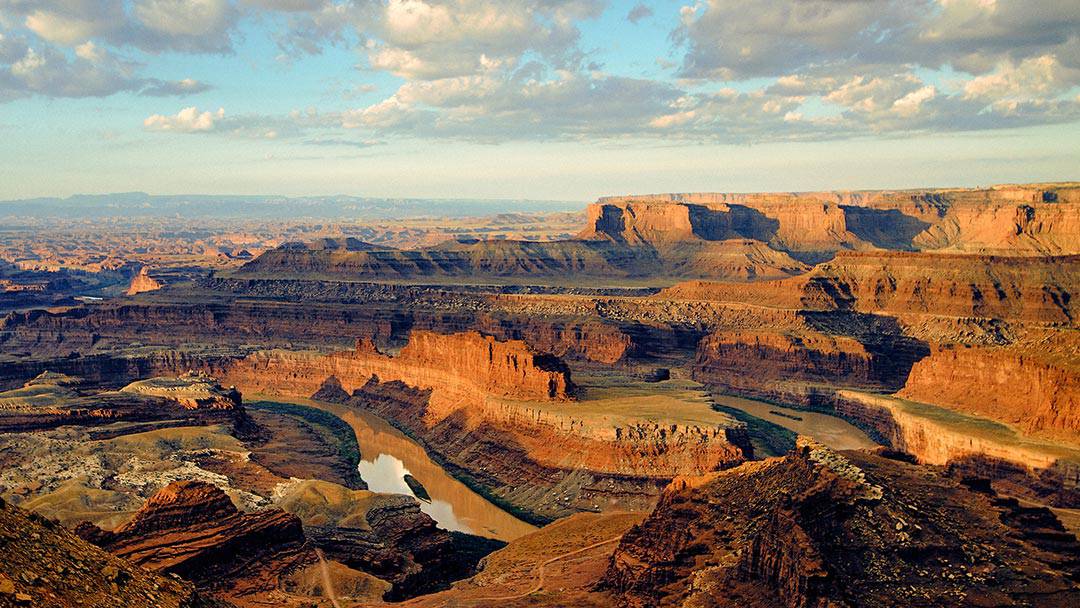
Why you should go: Dead Horse Point offers fabulous views of the Colorado River and Moab valley
- Distance: 4 miles
- Elevation Gain: 272 feet
- Difficulty: Moderate
Rising 2,000 feet above the Colorado River, Dead Horse Point features a dynamic landscape carved by thousands of years of water, ice, and wind. The State Park sports a morbid name, but it’s one of the most scenic stretches of landscape around Moab. The small park is absolutely worth a day-trip, and the loop hike around the main viewpoints is nice and family-friendly.
More Information: Dead Horse Rim Loop Trail
15. Druid Arch
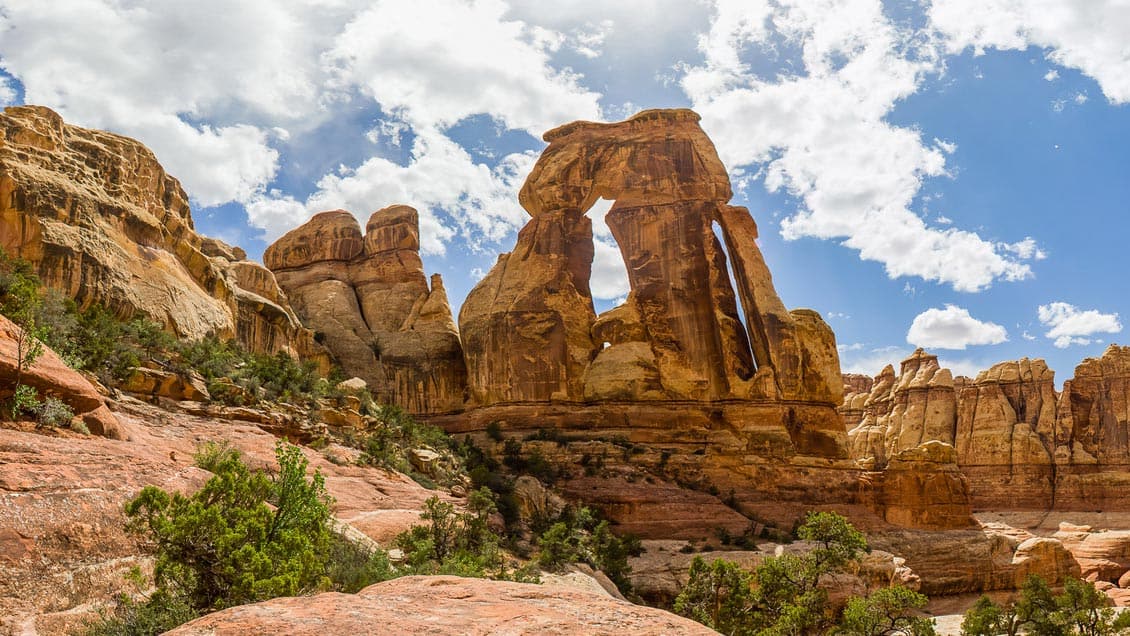
Why you should go: the iron-willed and steel-legged hikers who can handle the journey will enjoy an up-close look at a truly unique, magnificent cluster of natural arches
- Distance: 10.2 miles
- Elevation Gain: 1,018 feet
- Difficulty: Challenging
The Druid Arch Trail is a challenging hike that requires scrambling over ledges and up a steep, slippery crevasse. It’s not for the faint of heart, but for those who can endure the steep, rugged terrain, you’re in for a treat when you reach the spectacular Druid Arch.
There are a number of established campsites along the route to Druid Arch, so consider bringing your pack if you want to split the lengthy hike into a more manageable overnight backpacking trip. Camping permits are required, though, so be sure to plan ahead.
More Information: Druid Arch Trail
More Moab
Here’s a few more of our Moab guides to help to figure out where to stay and what to do.
Sign up for our free email to join thousands of readers getting epic travel, hiking, camping and gear ideas every week.
Seen in: Arches National Park, Hikes, Utah, West

